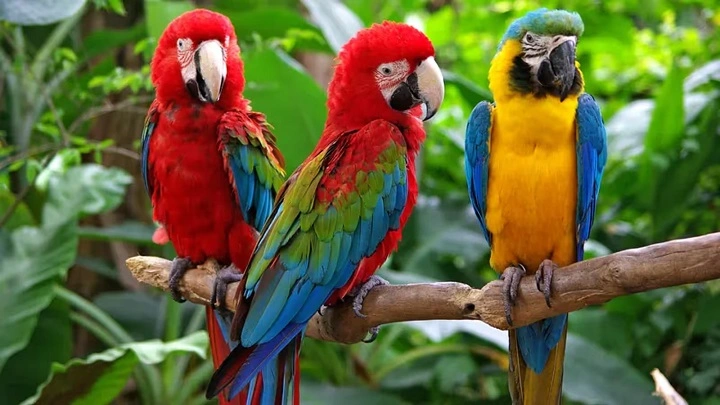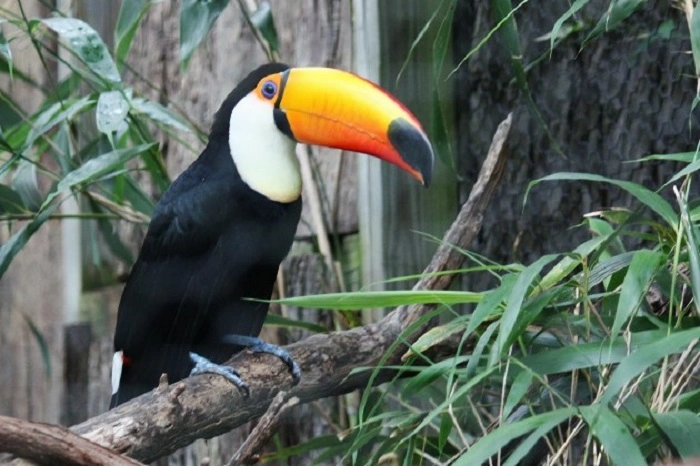Step into the Amazon Jungle, and there will never be a time when silence prevails. Wings fill every place. Sounds in the trees echo. Colour erupts among blackness. There are over 1,300 distinct bird species there, and it is our world’s most colourful bird paradise.
From fire-like scarlet macaws in the air to sparks-like flashing hummingbirds, the Amazon rainforest birds are not music accompaniments. They are the rhythm. They are the designers. They are rainforest songs.
Each feather is a tale. Each flight is in harmony. Preserve them, and you preserve the rainforest itself.
Why Birds Flourish in the Amazon
The Amazon is merciless. Waterlogged. Stinky smells. Endless green. And still—and birds must think heaven lies here.
- Weather: Scorching. Drenched. Unbroken. Perfect nesting and foraging weather.
- Food availability: Nectar, fruit, seeds, fish, and insects create an open-air smorgasbord.
- Habitats: Layer after layer. Rivers on the forest floor. Canopy route, way up high. All layers full of life.
This rainforest shields birds not alone. It hammers them into survival masterpieces.
Macaws and Parrots: Builders of the Future
Macaws flash through the canopy in bursts of multicolored light. Scarlet, blue-and-yellow, green-winged—so vivid they’re almost sunset quality. Their voices? Shattering. Authoritative. Unforgettable.
There is purpose to the spectacle, however. Macaws are seed dispersers. With beaks tough enough to crack even the hardest nuts, they plant forests into the future. Every flight, a planting. Every bite, an offering to tomorrow.
Parrots and parakeets join in. They fly in noisy flocks that boom from branch to branch like waves of laughter. Smart, clever, always in groups—they remind us in the Amazon that genius is flighted.
Toucans: Survival Written in Color
Imagine a beak so big it’s laughable. That is the toucan. Neon orange with black stripes, one foot longer than its head. A joke at first glance. A work of art at second glance.
It is the tough bill but light-as-a-feather bill. It prods fruit, stuffs its bill into inaccessible holes, and even serves as a radiator, cooling blood in the sweltering forest. It is displayed. It is defense. It is survival masquerading as carnival.
The toucan demonstrates a truism: blinding in the Amazon may be the ultimate survival strategy.
Harpy Eagle: The Apex Shadow
Reach out your arm, and the sky itself is dangerous. The Harpy Eagle, the Amazon’s biggest predator, is a silent killer with no mercy.
Claws bigger than a grizzly bear. Wings rob the sun. Terribly sharp eyes watching monkeys and sloths in top-most-leaf cover. And then it strikes. Quick. Brutal.
As the harpy pursues, the rain forest breathes with anticipation. Even the cacophonous macaw is silent. This eagle is a killer—yes—but winged power.
Hummingbirds: Sparks of Light
Transmute fear to wonder. And then, it seems, the hummingbird darts in. Small. Naked. But a spark of light.
The Fiery Topaz. The White-necked Jacobin. Every feather emits shifting color, so flight is a every-moment rainbow. Their wings flash by so quickly they appear to annihilate themselves. They land, sip nectar, and release pollen in mid-air.
If they weren’t present, the flowers would fall. With no flowers, the jungle would perish. These sparks ignite jungle blazes.
Hoatzin: The Strange Survivor
And then there’s the Hoatzin—the enigma. Also known as the “stinkbird,” its digestive tract is able to digest leaves like a cow and has a foul odor.
Clumsy flyer. Odd-looking. But a remarkable survivor. By consuming what no other bird will, it earns its right.
Even juveniles are battle-hardened with clawed wings. They arrive on the ground first before they arrive in flight, crawling on branches with animal determination. Proof that even most secretive animals have a part to play in the master plan in the Amazon.
The Birds’ Work of the Rainforest
Amazon rainforest birds are not decorations. They are life workers.
- Seed dispersers: frugivores and macaws plant tomorrow’s canopy.
- Pollinators: Hummingbirds cross-pollinate flowers in a flash.
- Insect control: Flycatchers and swifts make up for swarm control.
- Cleaners: Vultures scrape out rot, stopping disease dead in its tracks.
Take away the birds, and the jungle disintegrates. Preserve them, and the jungle flourishes.
Dangers Sullying the Skies
But beauty is not invincibility.
- Logging destroys nests and food in one fell swoop.
- Smuggling buries parrots and macaws, muffling their natural screams.
- Global warming disrupts rain patterns, starving nestlings and maddening migration.
- Hunting is feathers pulled, flesh hacked, lives lost that cannot be regained.
Each threat is a wound. And with each wound, the forest becomes weaker.
Hope Through Conservation
But hope continues to fly.
- Protected reserves save entire ecosystems from extinction’s edge.
- Ecotourism converts birds into economic lifelines, trading axes for binoculars.
- Education transforms attitudes, reminding people that these birds are friends, not trophies.
- Global partnerships—WWF to locally based at home—battle for wings to fly unencumbered.
Each nest held a win. Each chick-safe held a future won.
Also Read: Can Birds Eat Popcorn? Smart Portions, Safe Treats, Kinder Feeding Habits
Birdwatching: Meeting the Heart of the Amazon
To find the forest, watch its birds.
In Manu National Park, Peru. In Yasuni, Ecuador. In Tambopata, Brazil. These provide glimpses of a heaven with wings aplenty.
- Best time of year: Dry season, June to October.
- Best time of day: Early morning, when the forest stirs and the chorus is sung.
- Best approach: Silence. Patience. Eyes up.
You spot macaws scrub brush blue and red stripes. Toucans stalking like second-story clown monsters. Hummingbirds blazing like morning fires. One morning can transform everything.
Adaptations That Defy Logic
Here birds prosper with cunning.
- Camouflage: Patterns that look like bark and leaves.
- Mimicry: Parrots copy sounds, fooling predators and amusing people.
- Special diets: Hoatzins on leaves. Kingfishers pursuing fish. Getting there.
- Bonding: They spend their lives flying together, side by side, for decades.
In the Amazon, there is no option to adjust. It’s survival.
Spiritual Significance of Birds
Amazonians do not just think of birds as animals. They’re guides. Symbols. Messengers.
- Toucans symbolize strength.
- Eagles symbolize courage.
- Feathers find their way into rituals, dances, and sacred attire.
Birds carry prayers as far as the sky. They are the intermediary between earth and heaven. Without them, not just ecological destruction. It is a cultural loss.
FAQs On Birds in Amazon Rainforest
Q1. What are the most symbolic birds of the Amazon Rainforest?
Scarlet macaws, toucans, harpy eagles, hummingbirds, and hoatzins.
Q2. How many bird species live in the Amazon Rainforest?
Over 1,300, richest assembly of bird species on our planet.
Q3. Why are birds particularly significant here?
They seed-disperse, flower-pollinate, insect-control, and sanitize rot.
Q4. What is the bird’s most formidable predator?
The Harpy Eagle, whose claws can crush sloths and monkeys by touch.
Q5. Do tourists easily see them?
Yes, reserve-guided tours make them a common and memorable experience.
Closing Thoughts
Amazon birds aren’t extras in nature’s drama. They are the drama. They are music, rhythm, hue, alarm, and promise.
A macaw in every sweep of the sky. A hummingbird in every burst of light. A toucan in every class of resolve. A harpy eagle in every class of strength.
Defend them, and defend the Amazon. Defend the Amazon, and defend the future of life.




